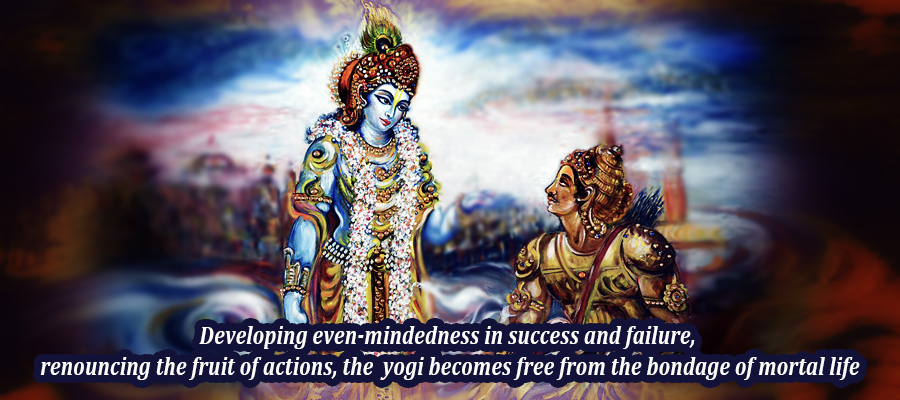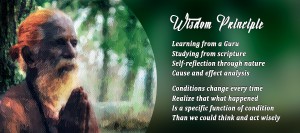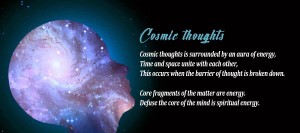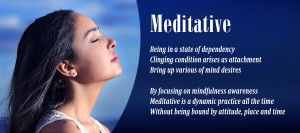This ordinary buddhi, however, has the capacity to go beyond our personal limitations so as to become universal. Ac-cording to Samkhya philosophy the quality of the buddhi is sâttvic (pure), and its course is an ascending one. This is confirmed by the dialectical process of our thinking: As soon as a position is established, it is succeeded by another, and in this way, the philosophical inquiry, stimulated by the buddhi, may be pursued. It is also well-known to the thinkers of the Occident that the fact of considering a conclusion to be final not only breaks off the philosophic inquiry but also compromises the very spirit of philosophy. The conclusion becomes a dog-ma, thought becomes fixed into a system, and the buddhi, having no further reason d’être, disappears.
We see that the same applies to scientific research, for the spirit of science and its method are identical with those of philosophy. The science which constitutes another approach to the truth progresses when the position of a seeker (who is necessarily conditioned, limited by his vâsanâs or innate tendencies) is contradicted by another seeker who is in the possession of data that are more complete. Thus science, while following an ascending path, stands a lesser chance of being checked in its course, for the man of science readily recognizes his errors, without giving up his research for that matter. In the philosophical search of the truth, however, the emotion and self-love of the author may form a great obstacle, and a philosopher is often seen to become dogmatic. In any case, whatever the position adopted by the philosopher or by the scientist, their position may be contradicted at any time.
These contradictions would be unsolvable, if the higher reason would not permit one to go beyond the level at which they are affected, namely in the waking state. Now in order to awaken the metaphysical intuition, Vedanta recommends the study of the three states of waking, dream and deep sleep. In this study, both waking and dreaming may be classed into the same category, namely that of the manifestation, the state of deep sleep being the non-manifestation. By thus embracing the states of manifestation and non-manifestation, the data are complete and the higher buddhi will go and consider these data integrally.
The lower buddhi which is unable to provide a final solution causes dissatisfaction and anxiety to the seeker. With many scientists, at the end of a life of research, we observe a withdrawal into themselves, a tendency towards idealism: Having applied all their attention to the object, they then tum towards the subject. But to pass thus from realism to idealism is to acknowledge that the ultimate certainty has not been obtained. And how could it be otherwise, since realism and idealism are but positions adopted in the waking state, whereas we are concerned to consider the totality of the data, i.e., the manifestation as well as the non-manifestation?
In the course of this research, it is the higher buddhi which eliminates the errors. In fact, the ordinary buddhi operates in the domain of reasoning (yukti) and logic (Tarka), and the philosophies which proceed exclusively from these modes of knowledge (such as the philosophy of Nyaya or Tarka Shastra, as well as the corresponding philosophies from the Occident), cannot take us to the Buddhi Yoga which alone can stop the vulnerability of the ‘third eye’, the eye of wisdom. In several places Shankara declares with intransigence, that the philosophical systems of Nyaya and Sarnkhya cannot yield the ultimate knowledge: ‘If one wants to know the true nature of Brahman, one should reject the notions of “totality” and “part”, of “unity” and “fraction”, of “cause” and “effect”, for the true import of all the Upanishads is to remove all definite conception with respect to Brahman’ (Shankara’s commentary on the Brihadaranyaka Upanishad, 11.1.20).
Normally our vision is veiled by prejudices and does not take the non-manifested aspect into consideration. But when the higher buddhi awakens, it will lead to a de-personalization of the individual whose vision is growing more lucid, more penetrating. ‘I will give you the divine eye,’ says Sri Krishna in the Gita (11.8). Arjuna then discovers the reality as it is, that is to say, free from all personal coloration. By giving Arjuna the eye of wisdom Sri Krishna accords him the cosmic vision.
In the symbolism of the word AUM this vision is represented by the letter A, and according to the Mandukya Upanishad (9th mantra) it concerns the Virat Purusha, the Cosmic Person, comprising the whole of the universe. Thanks to the Buddhi Yoga Arjuna beholds the person of Krishna both at the level of duality and as the Virat Purusha in which Krishna, the son of Yashoda and friend of Arjuna, is equally perceived by the latter as the Totality of all that exists: ‘For You, your-self are everything’ (10.40).





